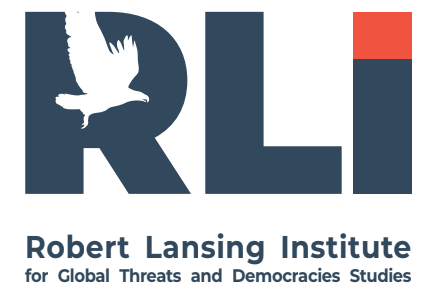Recent weeks have seen a dramatic intensification of tensions between Iran and Israel, marked by tit-for-tat military threats, cyberattacks, and covert operations across the region. With the specter of direct confrontation looming larger than ever.
II. Why Now? Strategic Timing Behind the Escalation
1. Post-Gaza Realignment
- Israel has emerged from the Gaza conflict with renewed assertiveness, targeting Iranian-backed networks in Syria and Lebanon.
- Iran, facing diminished regional prestige, is attempting to reassert deterrence via asymmetric escalation (militias, cyber, naval threats in the Gulf).
2. Iran’s Domestic Crisis
- Iran’s economy is under intense strain due to sanctions, inflation, and rising internal dissent.
- Nationalist rhetoric and external confrontation help the regime divert attention from domestic unrest.
3. Regional Power Competition
- Saudi-Israeli normalization, supported quietly by Washington, threatens Iran’s regional strategy of isolation.
- Tehran sees an urgent need to signal its red lines and disrupt potential alignment of Arab states with Israel.
4. U.S. Election Calculations
- Both sides may be maneuvering in anticipation of the 2024 U.S. elections (with delayed results now settling under the Trump administration in 2025).
- Iran may test U.S. resolve under Trump 2.0, while Israel seeks guarantees before any shift in American posture toward “restraint first.”
III. Implications and Scenarios
Scenario 1: Controlled Escalation (Most Likely)
- Covert attacks, targeted strikes in Syria, Iraq, and possibly the Red Sea.
- No full-scale war, but prolonged instability involving Hezbollah, IRGC proxies, and Israeli special operations.
- Cyberattacks and shipping disruptions continue to spike.
Implications:
- Weakened commercial confidence in Gulf and Eastern Mediterranean shipping lanes.
- Rising insurance and energy costs, especially if tankers are hit.
Scenario 2: Regional War (High-Risk, Low-Probability)
- Miscalculation or false-flag incident triggers full confrontation, possibly involving Lebanon, Syria, and even Iraq.
- Israel strikes key IRGC facilities; Iran responds with drone/missile salvos.
Implications:
- Disruption of global oil flows from the Strait of Hormuz.
- Massive refugee flows in Lebanon and Syria.
- Market panic, oil prices spike to $150+/barrel.
Scenario 3: Strategic De-escalation via Third Parties
- Turkey, Qatar, Oman, or even Russia mediate partial stand-down.
- Temporary de-escalation, but root tensions remain.
Implications:
- Short-term calm, but longer-term rearmament by all sides.
- Limited opening for diplomacy, especially on nuclear issues.
IV. Impact on Iran’s Internal Politics
- Increased militarization of the regime. The IRGC gains greater influence, using the crisis to suppress dissent.
- Economic blowback: sanctions tighten, currency plunges, and middle-class discontent rises.
- Nationalist backlash: rallies around the flag may temporarily help regime legitimacy, but prolonged confrontation will further isolate the population and spark fresh protests by winter.
V. Impact on Israel
- Military overstretch risk: simultaneous operations in Gaza, Lebanon, and Syria.
- Internal political polarization: divisions over strategy (moderation vs. total deterrence) re-emerge in the Knesset.
- Economic vulnerability: high-tech and tourism sectors suffer amid security concerns.
VI. U.S. Reaction: Strategic Dilemma
- Trump administration appears divided:
- Hawks (Pompeo-type faction) favor green-lighting Israeli strikes and using the crisis to tighten pressure on Iran.
- Realists prefer avoiding regional war that could derail economic recovery and U.S. Gulf partnerships.
Likely U.S. Actions:
- Supportive rhetoric for Israel but behind-the-scenes pressure for moderation.
- Expanded naval presence in the Gulf (CENTCOM).
- Quiet engagement with Gulf states and Turkey to limit escalation.
- Use of sanctions as “pressure valve” — e.g., targeting Iranian cyber and drone units.
VII. Global and Economic Impacts
| Sector | Effect |
| Oil markets | Volatility expected; potential short-term spike >$100 |
| Global shipping | Rerouting or delay in Red Sea & Hormuz; higher insurance rates |
| Stock markets | Flight to safe assets; regional equities slump |
| China & India | Strategic dilemma — both rely on Gulf energy and trade |
| Russia | Quietly benefits if oil spikes, may encourage instability |
Strategic Outlook
The Iran-Israel confrontation in mid-2025 reflects deeper systemic shifts: the collapse of deterrence norms, regional realignments, and an international environment where great power competition discourages mediation. While full-scale war remains avoidable, the risks of escalation and entrenchment are real.
Strategic Recommendations:
- For U.S.: Balance deterrence with diplomatic signaling; avoid empowering IRGC hardliners by overreaction.
- For EU: Reinforce naval presence in the Red Sea; explore backchannel diplomacy.
- For Israel: Avoid overreach; prepare civilian sectors for cyber retaliation.
- For Iran: De-escalate or risk economic collapse and deeper isolation.
China and Russia: Strategic Observers, Tactical Actors
China: A Reluctant Stabilizer with Energy Vulnerability
1. Strategic Position:
- China is Iran’s largest oil customer and a major infrastructure investor via the Belt and Road Initiative.
- While formally neutral, Beijing wants regional stability to protect energy routes (Hormuz, Red Sea).
2. Likely Response:
- Quiet diplomatic outreach via Oman or Pakistan to encourage Iranian restraint.
- Avoid direct alignment with either side — image as neutral mediator is important for its regional credibility.
- Increases security cooperation with Gulf states like Saudi Arabia to hedge against instability.
3. Risks for China:
- Disruption in oil supply chains could spike prices and hurt industrial recovery.
- Perception of Chinese passivity may undermine trust among Arab states if war erupts.
Russia: Quietly Exploiting the Crisis
1. Strategic Position:
- Russia is closely aligned with Iran militarily (Syria, arms sales, drones) but also has complex ties with Israel(deconfliction in Syria, diaspora).
- Putin benefits from disorder that distracts the U.S. and divides NATO/Middle East partners.
2. Likely Response:
- Offers rhetorical support to Iran but avoids military entanglement.
- Uses its influence in Syria to monitor Israeli activity and potentially extract concessions from both sides.
- Spreads disinformation to exacerbate confusion and erode Western policy cohesion.
3. Benefits for Russia:
- Higher global oil prices would directly boost Russia’s sanctioned economy.
- U.S. distraction in the Middle East reduces attention on Ukraine.
- Opportunity to sell more weapons to Middle Eastern states spooked by the confrontation.
How the Iran–Israel Crisis Affects Other Conflicts — Focus on Ukraine
I. U.S. Strategic Distraction: A Window for Moscow
- The biggest beneficiary of a prolonged Iran–Israel crisis is Russia, because it diverts U.S. attention and resources away from Ukraine.
- The U.S. may:
- Reallocate military assets to CENTCOM (Middle East), reducing pressure on Russia in Europe.
- Face political pressure at home to avoid “two wars” — especially under the Trump administration.
- Delay arms packages for Ukraine to prioritize Israeli needs (e.g., Iron Dome resupplies, munitions).
Implication:
Moscow may escalate in eastern Ukraine or open new fronts, believing the West is distracted and divided.
II. Narrative Leverage for Russian Propaganda
- Kremlin media is already spinning the Israel-Iran clash to argue:
- The West is hypocritical — defending Israel’s right to preemptive strikes but condemning Russian actions in Ukraine.
- U.S. hegemony leads only to endless war in every region.
- Russia portrays itself as a “stabilizing” power, especially in the Global South, capitalizing on anti-American sentiment.
Implication:
Russia strengthens its diplomatic position in Africa, Latin America, and parts of Asia by exploiting the crisis.
III. Resource Competition: Weapons and Intel Assets
- Israel is drawing more U.S. intelligence, surveillance, and strategic bandwidth.
- U.S. defense industrial base — already stretched — may need to choose between arming Israel vs. Ukraine.
- Artillery shells, loitering munitions, and missile components are in short supply.
Implication:
Delays in weapons deliveries to Ukraine, especially if Israel’s war becomes protracted.
IV. Iran’s Role as a Weapons Supplier to Russia
- If war breaks out with Israel, Iran may reduce drone shipments to Russia, at least temporarily.
- However, in a prolonged conflict:
- Iran might demand Russian support in return (e.g., intelligence, cyber).
- Both may intensify coordination on asymmetric warfare tools (drones, cyber, propaganda).
Implication:
Short-term disruption of Iranian support for Russia, but long-term deepening of the Iran-Russia axis.
V. European Strategic Confusion
- Europe must now deal with multiple simultaneous threats: Russian aggression, Middle East instability, and migrant surges.
- Some EU states may:
- Prioritize energy security over Ukraine.
- Shift diplomatic focus to preventing war in the Middle East, reducing pressure on Moscow.
Implication:
Diluted European unity on Ukraine — especially from Mediterranean and energy-sensitive states like Italy, Greece, and Hungary.
VI. NATO’s Strategic Stretch
- NATO may be forced to:
- Deploy more naval power to the Eastern Mediterranean and Red Sea.
- Increase deterrence posturing in the Baltics and maintain readiness in the Black Sea and Eastern Europe.
Implication:
Risk of overstretch if Russia tests NATO response times during Middle Eastern tension.
Strategic Forecast
| Time Horizon | Risk to Ukraine from Iran–Israel Crisis |
| 0–3 months | High distraction risk; possible delays in aid |
| 3–6 months | Potential for Russian escalation in Donbas |
| 6+ months | Stronger Russia–Iran military-industrial link |
The Iran–Israel escalation plays directly into Russia’s strategic interests:
- It drains U.S. and NATO attention,
- It provides diplomatic and narrative cover,
- It may disrupt Ukrainian resupply timelines.
If the crisis deepens, Ukraine risks becoming a secondary theater in global U.S. policy — a scenario Putin has long sought.
The risk of nuclear weapons use in the Iran–Israel confrontation remains low—but not zero. While both countries operate in a climate of strategic ambiguity and brinkmanship, multiple factors constrain them. Below is a detailed assessment.
🧨 Nuclear Weapons Use: Risk Assessment (June 2025)
🇮🇱 Israel’s Nuclear Posture
Known Capabilities:
- Estimated to possess 80–90 nuclear warheads.
- Delivery methods include Jericho ballistic missiles, air-dropped bombs, and submarine-launched cruise missiles (Dolphin-class subs).
Policy:
- “Amimut” (opacity) doctrine: neither confirm nor deny nuclear status.
- Long-standing doctrine of last resort — a “Samson Option” in case of existential threat.
Risk of Use:
- Extremely low, unless:
- Iran is confirmed to be imminently deploying its own nuclear weapon.
- Israel suffers massive conventional destruction (e.g., Tel Aviv hit by WMDs or precision missile barrage).
- Regime collapse scenario.
Current Outlook:
- Despite escalation, Israel still relies on conventional dominance, cyber, and targeted strikes.
- Nuclear use would provoke massive international backlash, even from allies.
Iran’s Nuclear Trajectory
Current Status (June 2025):
- Iran is a nuclear threshold state, meaning:
- It has enriched uranium to 60–90% levels in small quantities.
- Could, in theory, build a bomb within 6–12 months, but likely lacks reliable warhead delivery systems and tested devices.
Intentions:
- Iran denies seeking a bomb but uses the threat as leverage.
- The Supreme Leader’s fatwa (religious decree) against nukes is more political than strategic doctrine.
Risk of Use:
- Currently nonexistent—Iran does not yet possess deployable nuclear weapons.
- Even if developed, first use would be suicidal due to overwhelming Israeli and possibly U.S. retaliation.
What would change this?
- An Israeli attempt to destroy key Iranian leadership sites.
- Iran being cornered geopolitically, with no escape from regime change.
- Confirmation of U.S.-backed regime removal plans.
🧮 Strategic Risk Scorecard (June 2025)
| Scenario | Probability | Notes |
| Israel first use (preemptive) | <1% | Only if Iran deploys a nuclear weapon |
| Israel retaliatory use after existential attack | 1–3% | High bar: must be existential threat |
| Iran first use (if armed in future) | 0% (now) | Iran is not yet nuclear armed |
| Nuclear accident or false alarm escalation | ~2–5% | Higher if cyberattacks spoof warning systems |
Intelligence-Based Red Flags to Watch
- Unusual Israeli submarine deployments to Arabian Sea.
- Emergency U.S. evacuations from Israel or Gulf allies.
- Sudden Iranian expulsion of IAEA inspectors.
- High-level travel to underground Iranian facilities (Fordow, Natanz).
- Public announcements by Iranian leadership about withdrawing from NPT (Non-Proliferation Treaty).
: Low But Watchable Risk
- Near-term nuclear use is very unlikely, but if Iran crosses the weaponization threshold and Israel believes time is running out, the risk calculus could change.
- The most serious threat lies in:
- Misinterpretation of signals, especially under cyber warfare.
- A future Iranian bomb, not current capabilities.
Comparative Table: Nuclear Weapons Use Risk
Iran–Israel (2025) vs India–Pakistan (recent escalations)
| Factor | Iran–Israel (2025) | India–Pakistan (Recent Conflict) |
| Nuclear Status | Israel: undeclared nuclear power (80–90 warheads) Iran: threshold state, no bomb yet | Both declared nuclear powers since 1998 |
| Nuclear Doctrine | Israel: Ambiguity, “Samson Option” (last resort) Iran: No formal doctrine (no nuke yet) | India: No First Use (NFU) policy Pakistan: Ambiguous; reserves right to use first |
| Crisis History Involving Nukes | No direct nuclear threats in past wars (1973, 2006, Syria) | Multiple crises with nuclear shadow (Kargil 1999, 2001–02, Balakot 2019) |
| Command and Control | Highly centralized and secure (Israel) Iran: unknown if weaponized | India: secure, civilian oversight Pakistan: military-led but maturing |
| Likelihood of First Use | Extremely low (Israel would only use if existentially threatened) Iran: no capability yet | Pakistan: possibly early use in case of deep Indian incursion India: only retaliatory |
| Stability of Leadership | Stable government in Israel Iran: controlled by IRGC, but rational actors | India: civilian-led democracy Pakistan: civil-military split, nuclear decisions dominated by army |
| Risk of Accidental Launch or Miscalculation | Moderate, especially under cyber war or misread escalation | Higher, due to short missile warning times, poor crisis communication |
| Probability of Use (expert est.) | 1–3% (only in extreme scenarios) | 5–10% in intense crisis, especially from Pakistan |
| External Mediators | U.S., Russia, Oman (can intervene in Israel-Iran crisis) | U.S., China, Gulf powers often mediate Indo-Pak flare-ups |
Key Comparative Insights
1. Iran–Israel risk is lower for now
- Iran does not have a deployable nuclear arsenal.
- Israel is extremely cautious; it views nukes as deterrence, not usable weapons.
2. India–Pakistan risk is higher during crises
- Both sides possess nukes and have exchanged fire multiple times across the LoC (Line of Control).
- Pakistan’s doctrine allows early tactical nuclear use, especially if India pushes into its territory.
- India’s “Cold Start” doctrine worries Pakistan, raising first-use temptation.
3. Command and Political Stability Differences
- Pakistan’s nuclear trigger is military-heavy, creating higher risk in times of civil instability.
- Israel has tight civilian control, while Iran’s eventual nuclear decisions would likely rest with the IRGC or Supreme Leader.
Scenario-Based Risk Comparison
| Scenario | Iran–Israel | India–Pakistan |
| Missile exchange with heavy casualties | Low chance of nuclear response | Moderate-to-high chance of escalation |
| Loss of strategic infrastructure | Low, unless Tel Aviv is hit | Moderate, if major city or dam is struck |
| Regime threat or collapse | High nuclear risk (Israel) | Pakistan may escalate early if survival is threatened |
| Cyberattack simulating nuclear launch | Growing concern in both cases | More dangerous for Indo-Pak due to fast timelines |
🧭 Conclusion: Who is More at Risk?
- Short-term risk: Higher in India–Pakistan, due to both sides being nuclear-armed, history of conventional wars, and Pakistan’s potential early-use policy.
Long-term strategic concern: Grows in Iran–Israel, especially if Iran develops a nuclear bomb. Future risks depend on whether deterrence is stable or if preemption becomes tempting.
to a significant extent, the current Iran–Israel escalation can be seen as a direct consequence of Trump’s Middle East policy failures, especially his decisions between 2018 and 2020. Here’s a breakdown:
1. Withdrawal from the JCPOA (Iran Nuclear Deal) in 2018
- Trump unilaterally withdrew from the Joint Comprehensive Plan of Action (JCPOA), despite Iran’s verified compliance at the time.
- This:
- Eliminated constraints on Iran’s enrichment program.
- Weakened international consensus — Europe, Russia, and China continued support for the deal.
- Empowered Iranian hardliners, who claimed diplomacy with the West was futile.
Consequence: Iran resumed uranium enrichment, ramped up centrifuge deployment, and accelerated toward threshold status — directly raising Israeli fears.
2. “Maximum Pressure” Campaign Backfired
- Trump’s administration imposed crippling sanctions on Iran, targeting oil exports, banks, and humanitarian sectors.
- Instead of capitulating, Iran:
- Increased support for regional proxies (Hezbollah, Houthis, militias in Iraq and Syria).
- Retaliated with missile strikes and tanker attacks, increasing instability.
- Built deeper ties with Russia and China, evading Western leverage.
Consequence: U.S. pressure isolated itself rather than Iran.
3. Abraham Accords: Diplomatic Success with Strategic Blind Spots
- The Trump administration brokered Arab-Israeli normalization, but without addressing the Iran factor or creating a broader regional security framework.
- This:
- Angered Iran by encircling it diplomatically.
- Did not include meaningful Gulf-Israeli security coordination to contain Iran.
- Left Iran and Israel on a collision course, without off-ramps or buffers.
Consequence: Peace between Arab states and Israel did not reduce the risk of direct Iranian-Israeli war — it may have accelerated it.
4. Breakdown of U.S. Deterrence & Credibility
- Under Trump, the U.S. appeared inconsistent and erratic:
- Assassination of Qassem Soleimani (2020) was not followed by a coherent strategy.
- Trump threatened but avoided full war, confusing allies and emboldening adversaries.
- Inconsistent policy signals made Israel feel alone, and Iran feel cornered.
Consequence: Both sides lost faith in U.S. stability as a regional arbiter.
The chain reaction started under Trump — his decision to kill the Iran Deal removed the only functioning brakeon Iranian-Israeli escalation.
Final Judgment
Trump’s policies created the structural conditions for this conflict.
- He dismantled diplomacy without a viable replacement.
- He empowered hardliners on both sides.
- He weakened U.S. credibility in the Middle East.
This does not mean he caused the war outright — but the risk environment now exploding into conflict is largely his legacy.




